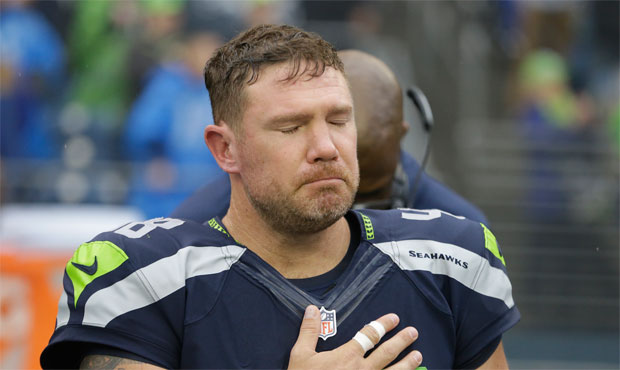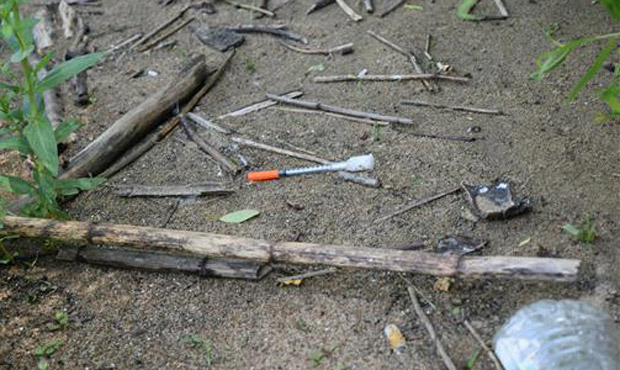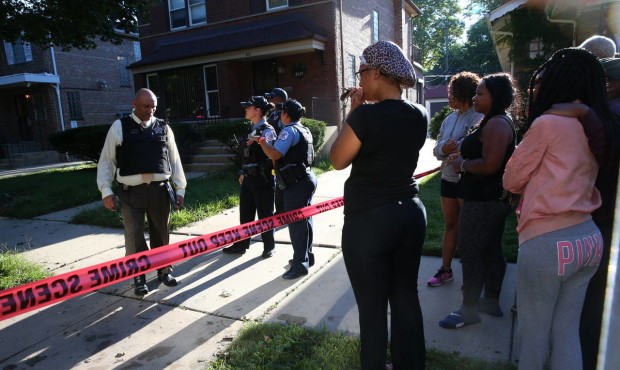Mixtape
INTERVIEW: Anna & Elizabeth
 Photo Credit: Lisa Elmaleh
Photo Credit: Lisa Elmaleh
“Anna & Elizabeth come from a rich tradition of singers in the Appalachian mountains and have studied at the feet of the masters.” That’s just one impressive fact about multi-instrumentalist and singer Anna Roberts-Gevalt, and acclaimed Appalachian ballad singer Elizabeth LaPrelle, the duo that is: Anna & Elizabeth.
These two tremendously talented women sing traditional songs that tell stories of people that lived many years before with such fervor and passion, it’s hard to believe that these songs aren’t tapped directly from the bygone era they were originally created.
“The old songs remain because next generations choose to sing them — and there’s a wisdom in that attraction to the songs, I think — there must be something that rings true in the old songs, that makes us want to sing them again and again,” explains Anna & Elizabeth.
Anna & Elizabeth have a brand new self titled album out, too! It’s a collection of 16 traditional songs that you’ll completely dig. Go here for more info!
I had the chance to chat with the duo about Appalachian roots music, crankies, studying with the masters, the importance of old songs, and action figures.
Also, make sure to check out Anna & Elizabeth when they play The Triple Door this coming June 29th.
the mixtape: How did you two first meet and did you know right from the start that working together absolutely had to happen?
Anna & Elizabeth: We met about four years ago, in Blacksburg Virginia. We were both just out of college– Elizabeth had returned to the family farm in Rural Retreat, and I was living with a bunch of musicians in a little house by the New River in another teeny town. I heard Elizabeth’s voice when we met– I think I made her sing Barbara Allen or something like that. I showed her the crankie I’d made in college– a cloth scroll embroidered with illustrations depicting a ballad… we both kinda freaked out about each other. Our collaboration came quickly out of that meeting– a series of conversations about what drew us to performing, to the music, to theater, and to small towns and visits with old ladies.
tm: At the start of your friendship you two discussed a shared desire to inspire people with the beautiful soul of Appalachian roots music. What exactly is Appalachian roots music and what is it about this music in particular that you two find intriguing?
A&E: It’s hard to say exactly what Appalachian roots music is. It’s a lot of things — string band music, square dance music, fiddle tunes, banjo songs, ballads, gospel music, blues, shaped note singing… Loosely, I guess, it’s the music people played in their homes in the mountains. We play the music of some wonderful singers, whose singing and repertoire have drawn us in– Texas Gladden, Addie Graham, Dock Boggs, Frank Proffit. People born 100 years ago– who sang music for their families, their communities.
tm: Here’s a quote from your press release: “That story, the story of why the songs endure, feels important for us to tell”. Can you explain what this means exactly and why it’s important to you?
A&E:We just got back from Ireland. One of our nights in Dublin, a late night, we got a cab ride home– and our cab driver was particularly chatty. We got to talking about how many old buildings remain in Ireland– old abbeys and castles and villages — and how people keep visiting these places, year after year. He waxed poetical– saying, “yes, you can be in this place, built 800 years ago and you know– the people who built it they had hopes and dreams just like us.”
So old songs are important, for reasons along those lines. The past can be hard to relate to, yet those people before us are how we ended up here — singing these songs, sharing these songs, bringing them into a room — it’s a way of trying to relate to the people who sang them before us. A little window into their world. The old songs remain because next generations choose to sing them — and there’s a wisdom in that attraction to the songs, I think — there must be something that rings true in the old songs, that makes us want to sing them again and again. It’s not always clear why — sometimes, it’s just a feeling in your gut.
tm: Describe what crankies are and how you incorporate both shadow puppets and crankies into your music.
A&E: Crankies are a central part of our partnership — We illustrate scrolls– 18 inches tall and 20 yards long– some of the scrolls are cloth, with illustrations sewn and patchworked on. Others are paper, and we do papercuts or block prints or paint . The scroll gets placed into two spools in a box frame, and in performance we crank (hence the name) the scroll around– so the pictures go by, as we sing a ballad or tell a story.
It’s an old idea– we’ve seen some from 150 years ago. For us, the crankies– which we create together– came out of our desire to really engage our audience in the stories in the songs. Ballads, in traditional form, are sung without accompaniment. To a first time listener, the plots in their twists and turns, switching of narrator, and archaic language, can sometimes make it hard to understand what’s going on… I remember receiving a compliment once after singing a ballad, someone saying “oh you have such a nice voice,” and thinking, oh no, they weren’t listening to the story at all! That’s a thread in the tradition, too, this idea of being behind the song — that the most important part is the story.
The crankies illustrate the ballads, helps the audience on their way to imagining the story in the ballad, as it’s being sung.
tm: You’ve studied with old (and young) music masters and folklorists. Could you make the music you are today if you hadn’t studied under these people?
A&E: Definitely, our music is so linked to the time we’ve spent with our teachers, young and old. This is community music, we couldn’t have learned it without our community. Elizabeth grew up going to fiddlers conventions in Virginia, with her family, who sing around the house. I (Anna) found the music in college, and spent a couple summers in East Kentucky, where a group of wonderful musicians showed me the way.
I (Anna) got to learn from a really sweet old fiddler, for a few years– his name was Paul David Smith. He was in his mid seventies when I met him — had twinkly blue eyes and a mustache he curled at both ends. He was such a gentleman- – played the fiddle so softly, with such taste and generosity — he’d wink at you, to play a solo, and he’d play harmony to your lead and could make you feel like you were the best fiddler in the world — he could elevate you to his level. He died a few years ago — and, now, all the tunes he taught me are linked to those memories, the way the tunes were linked to memories of his teacher, for him. Some of the sweetest tunes, in particular– when I play them, I remember his generous spirit, and his wink– and I find myself winking to whomever I’m playing with. Makes the tunes so rich.
tm: As far as I’ve noticed all of your songs are traditional. Do you have any original songs?
A&E: We perform traditional music together – that’s the mission of our partnership, to get people to hear these old songs. Our friends are convinced that original songs will come, one of these days.
tm: In some videos I’ve seen, you tell a story before you play a song. Essentially you give a bit of a history lesson. What’s the importance of telling a bit of a story before you two play a song?
A&E: So, we play folk music — but folk can be such a vague word, to say a song is just a “folk” song, like the source of it is this anonymous group of people. That’s partially true. But I think one of the things that draws us into our work is learning about the specific musicians and singers who carried the music on in their towns or families. We’ve been really blessed, to be able to get to know the families of two of our favorite ballad singers, Addie Graham and Texas Gladden. These songs, for these families, have a place amongst recipes, photo albums, family jokes, fond memories — they’ve been gracious, to share some of those stories with us. And, in turn, we like to share those stories with our audience.
We try to convey some of that richness, in our show. That the music is part of a culture, a way of life, a landscape.
Besides, whenever you visit an old fiddler or banjo player– there’s inevitably a laugh, or a story, in between the playing of tunes. So it’s nice to carry on that delivery, on stage.
tm: Do you get down with any music of today? If so, who do you enjoy listening to?
A&E: Gosh, yes. So much music. Beyonce and pop country music helps us on long car drives. Elizabeth listens to heavy metal sometimes, Anna’s been learning about new music & minimalism– John Cage, Steve Reich and Terry Riley.
We’re so glad that there’s so much good folky music being made right now. Some of our favorites are: Sam Amidon, Cate Le Bon, The Murphy Beds, Cahalen & Eli, Lynched (a Dublin band), Robert Sarazin Blake, Tim Eriksen & Eliza Carthy, Lau, Anais Mitchell, to name a few!
tm: If you could go back in time and expel a bit of advice to your 13 year old selves, what would you say?
A&E: I think we both read a lot of books around this time. I think, keep reading?
tm: If Anna & Elizabeth was an action figure, what would your accessories be?
A&E: A notebook & a tape recorder? We’ve always joked that it would be awesome to make action figures of our favorite ballad singers.




































Comments